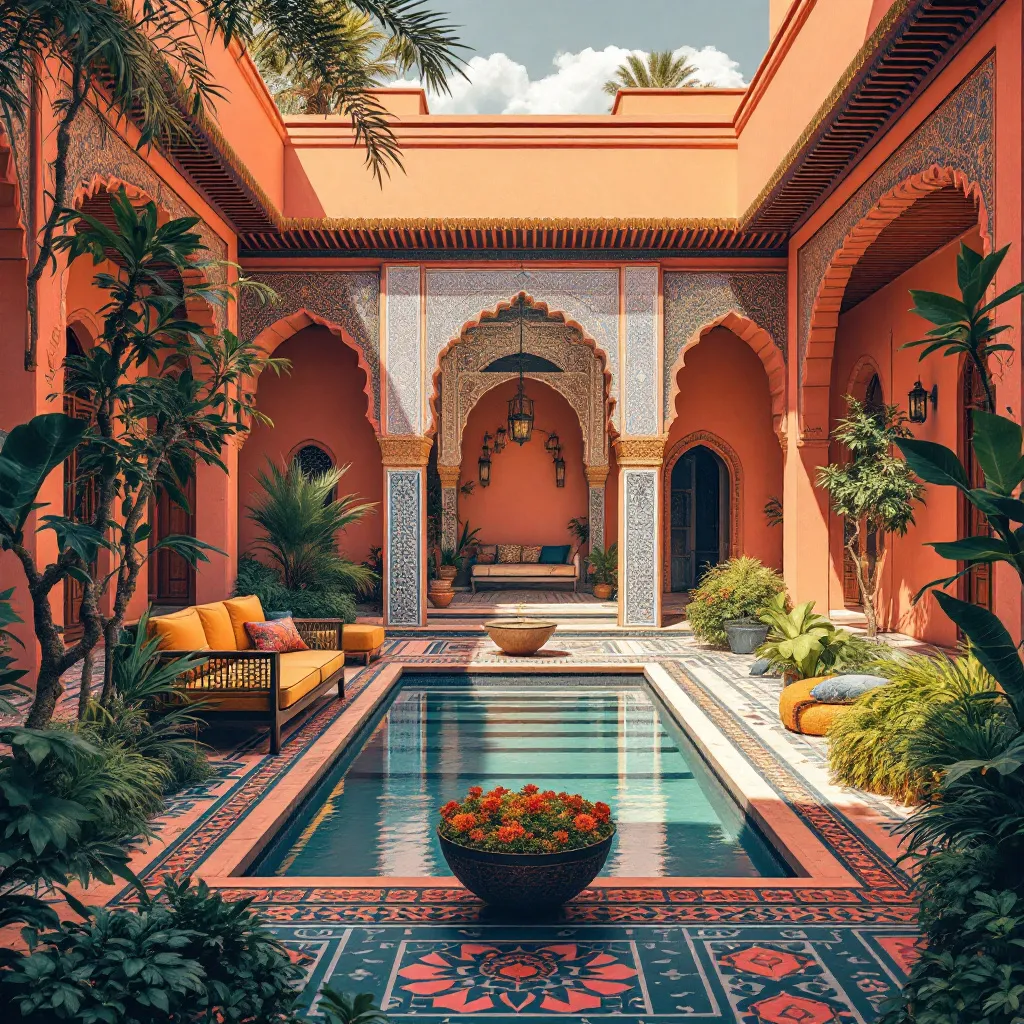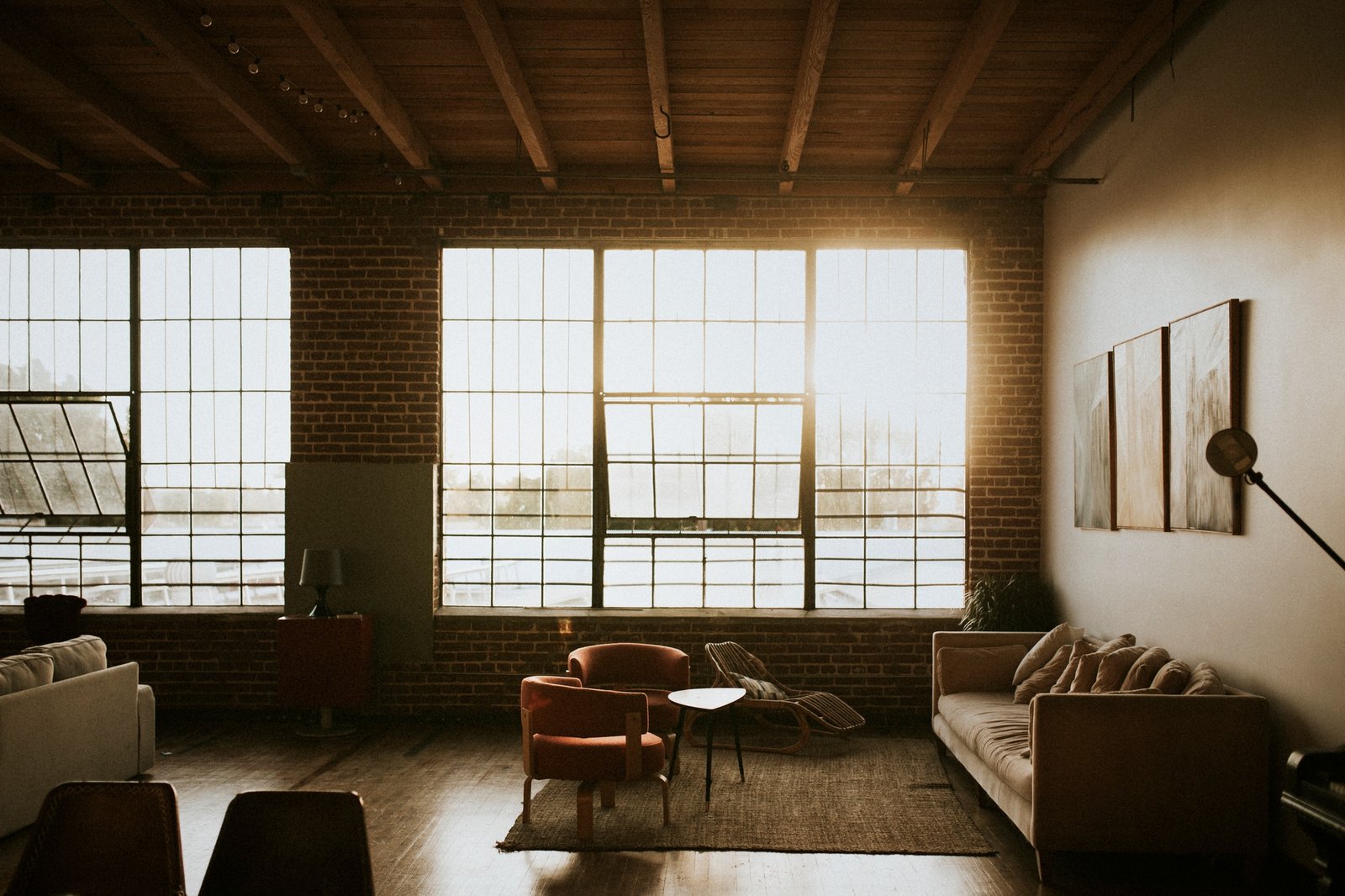Historical Context of Arabic Architecture
Arabic architecture has a rich and diverse history that traces its roots back to the early Islamic period, reflecting a blend of cultural influences and artistic innovations. The emergence of Arabic architectural styles can be linked to the vast cultural exchanges that took place during the Golden Age of Islam, specifically from the 8th to 14th centuries. This era marked a significant period of prosperity, during which scholars, architects, and artisans shared knowledge and techniques across the Islamic world, leading to the creation of magnificent structures that remain influential today.
Key architectural elements that are characteristic of Arabic design include the use of rounded domes, intricate arches, and ornate tile work. The dome, often adorned with elaborate patterns, not only serves a structural purpose but also symbolizes the heavens and divine architecture. Arches, particularly the horseshoe and pointed varieties, are prevalent in many historic mosques and palaces, allowing for spacious interiors and an aesthetic harmony that captivates observers. Tile work, featuring geometric patterns and calligraphy, adds a layer of cultural significance and artistic expression, showcasing the skilled craftsmanship that was prevalent during historical periods.
Throughout history, several milestones have shaped Arabic architecture, including the development of key structures like the Alhambra in Spain and the Great Mosque of Samarra in Iraq. These structures exemplify the grandeur and intricacy of Arabic architectural designs, reflecting both religious devotion and the cultural diversity of the Islamic world. In contemporary architecture, modern designers often draw inspiration from these historical elements, adapting them into innovative environments that respect tradition while embracing contemporary needs. Therefore, the legacy of Arabic architecture continues to influence and shape the architectural landscape, bridging the past with modernity.
Key Features of Arabic-Inspired Modern Architecture
Modern architecture influenced by Arabic design is characterized by several distinctive features that echo traditional elements while adapting to contemporary needs. One prominent focus is the use of geometric patterns, which are often integral to Arabic art and architecture. These intricate designs serve not merely as decoration but also convey a sense of harmony and spirituality, inviting deeper reflection. Architects today often integrate these patterns into facades and interior spaces, enhancing the aesthetic appeal of their structures.
Another essential feature of Arabic-inspired modern architecture is the incorporation of courtyard layouts. Traditionally, courtyards provided a cool space in the hot climate, promoting ventilation while offering privacy. In new projects, this design element continues to be significant, enabling architects to create environments that are both functional and culturally resonant. Courtyards foster a connection to nature, allowing for greenery and water elements that enhance comfort and tranquility.
Blending indoor and outdoor spaces is also a key consideration. This integration helps to create seamless transitions, where large glass openings and shaded areas allow natural light to flood interiors while minimizing heat gain. Such design practices are vital in regions with extreme climates, reflecting both traditional strategies and modern comfort requirements. Sustainable materials play a critical role in this context, with architects increasingly seeking out resources that are not only environmentally friendly but also reflective of traditional Arabic aesthetics.
Renowned architects, such as Zaha Hadid and Hassan Ragab, exemplify these features in their works. The Heydar Aliyev Center by Hadid, for instance, showcases fluid lines and a harmonious integration of natural elements, which resonate with classic Islamic principles. Through these innovative approaches, modern architecture continues to celebrate its Arabic heritage while addressing the practical demands of contemporary life.
Current Trends in Arabic Architecture
The field of Arabic architecture has been undergoing significant transformation, reflecting the contemporary needs and aspirations of societies in the Arab world. One prominent trend is the emergence of eco-friendly designs that prioritize sustainability and environmental consciousness. Architects are increasingly incorporating green building practices and materials, utilizing solar energy, water conservation systems, and natural ventilation to create structures that minimize their ecological footprint. This shift towards sustainability represents a response to the growing global emphasis on climate change and the responsibility to design buildings that foster a healthier environment.
In parallel, the integration of smart building technologies within traditional architectural frameworks is gaining traction. Many architects are embracing the challenge of blending cutting-edge technology with the rich heritage of Arabic design. This results in buildings that are not only aesthetically pleasing but also improve efficiency and functionality. For example, advancements in building management systems enable better energy use, while innovative security and communication technologies enhance the overall experience for occupants. Such developments showcase how modern architecture respects cultural roots while adapting to modern exigencies.
Globalization is another key factor influencing contemporary Arabic architecture. The widespread exchange of ideas and styles across borders has opened up a myriad of possibilities for architects. As a result, one can observe a fusion of traditional elements with modern aesthetics, leading to unique architectural expressions that reflect both regional identity and international influence. Major cities such as Dubai and Abu Dhabi exemplify this trend, showcasing skyscrapers and urban landscapes that encapsulate a blend of local culture and global design sensibilities.
Urbanization has created a pressing need for affordable housing and urban spaces in rapidly growing cities across the Arab world. Architects are tasked with addressing this challenge through innovative designs that maximize space and functionality while remaining cost-effective. This has led to the development of multi-use complexes that incorporate residential, commercial, and recreational spaces, fostering vibrant communities and enhancing the urban living experience.
Future Directions of Arabic Architecture
The future of Arabic architecture stands at a fascinating crossroads, shaped by myriad socio-political changes, pressing environmental issues, and rapid technological advancements. As the Arab world continues to evolve, a new generation of architects is emerging, characterized by their innovative ability to blend traditional heritage with contemporary, futuristic design principles. This shift towards a modern architectural lexicon represents not just a departure from the past but also a respectful homage to the rich historical legacies that define Arab identity.
Technological advancements, particularly in digital tools and virtual reality, are revolutionizing architectural planning and execution in the region. These technologies offer architects unprecedented capabilities to visualize and manipulate designs before they are constructed. This evolution enables a more meticulous integration of sustainable practices, as designers can simulate environmental impacts and optimize energy efficiency in their plans. In this context, the focus on sustainable architecture and the incorporation of eco-friendly materials are becoming increasingly significant, addressing the urgent need for environmentally responsible building practices.
Moreover, the preservation of cultural identity remains paramount as Arabic architecture progresses. The challenge lies in maintaining a strong sense of place and cultural resonance while simultaneously embracing modernity. Emerging architectural styles may reflect this duality, showcasing innovative materials and construction techniques while drawing on traditional patterns, motifs, and spatial configurations synonymous with Arab culture. Future projects may increasingly embody an Arab identity that resonates on a global level, exploring how traditional elements can harmoniously coexist alongside contemporary architectural expressions. This dynamic interplay will likely serve as a framework for inspiring architecture that captures the complexities and diversities of the Arab experience in a rapidly globalizing world.






